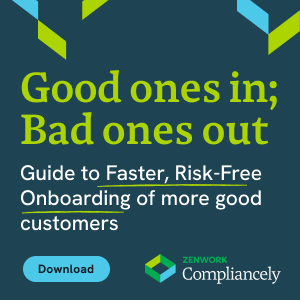
Why Businesses Should Conduct CIP In Compliance With Anti-Money Laundering (AML) Regulations
Anti Money Laundering efforts have been encouraged by federal and international monetary bodies to help banking and financial sectors avoid engaging in the illegal methods of legitimizing money gained through unlawful and illegal regimes, such as drug peddling, corruption, and more.
It is no secret that the illegitimate monetary funds are saved in overseas banks to avoid tax burden and attention from the IRS and other federal forces.
This is why AML practices, such as Know Your Customer and Customer Identification Processes are mandatory for businesses in financial services, banking, digital/neo banking, cryptocurrency, and other industries.
Even emerging industries, such as e-commerce, retail, healthcare, and more, are embracing the advantages of integrating robust CIP and KYC procedures to reduce money laundering, terrorism financing, and related regimes.
While this is the primary objective of a customer identification process, the anti-money laundering practice also drives identity verification, screening, due diligence, and other compliance enabling factors. The following will discuss in length why businesses must build a strong customer identification process.
Improved Customer Due Diligence
Customer due diligence is correlated with identifying individuals and entities, where the financial institution and customers are in a legal business relationship. The financial institution must take several measures to create a foundational relationship with the customer to establish common grounds, based on which the contract commences.
Today, financial institutions are regulated to retain identification details and proof from the customer, such as the name, social security number, address, place of birth, date of birth, contact information, and more. This information is vetted against the official records of the IRS, Social Security Administration, and other authorized bodies of the government.
Depending on the identity results and insights gained through basic verification methods, the due diligence moves from basic to enhanced to scrutinize a profile further to assess risk and discrepancies in financial background.
Customer identification processes boost due diligence efforts, helping financial institutions avoid onboarding high-risk profiles, preventing money laundering regimes, and improving the approval metrics.
Identity Validation & Verification
Customer identification processes require financial entities to ask for proof of identification from customers to validate and verify the details of the customers against authorized records of the federal organizations, such as the IRS.
The identity validation processes require retaining certain identification details from the customers. The recorded information is validated per the official records. The mismatched details are flagged and information with unclear narratives will be validated against other authorized lists to further validate the credibility of the customer identity and details.
Assessing & Preventing Risks
When the details provided by the customers do not match the Stage-1 identification process, the financial institutions do not reject the profile right away. The details are searched against other watch lists to check if the details match the results on a different authorized list.
When the details of a customer have been listed in watch lists or sanctions databases, the financial institution has to decide on whether to proceed with a high-risk profile or to reject the applicant.
While high-risk profiles mean bad news, many banks around the world continue to onboard high-risk profiles due to the influx of monetary funds. However, international monetary regulatory bodies, such as FATF, advise financial institutions to reject such profiles to maintain monetary stability and compliance.
And financial risks are not the only risks that businesses are assessing here. Reputational losses, prohibited business associations, operational risks, and more must also be considered before deciding on a high-risk profile.
Establishing Better Decision Making
Identity validation practices allow businesses to identify their customers per the official records. This means the businesses are powered to identify, validate, and verify the details of an individual or entity. This allows businesses to understand the security, financial, civil, and social risks a customer could bring, leading to making informed decisions.
Better decision-making does not stop at onboarding the customer. Even after onboarding, the customer identification processes can be used to check the real-time compliance status of an individual or an entity, allowing the business to re-evaluate its business relationships, terms, risks, and legal status.
Should the business encounter suspicious activity in the accounts of the customers, wherein the accounts are being operated in cross-border locations, or the accounts show extreme monetary activity (too many funds or no funds at all), or the customer is unable to produce some proof for sources of funding, the business must draft and submit Suspicious Activity Reports, alerting law enforcement.
Enhanced Monitoring
A customer identification procedure allows businesses to monitor account activity, frequency of transactions, nature of transactions, end-to-end sources involved in the transactions, and so on. This helps in identifying the main conspirator behind a money laundering transaction.
The neo banking industry understands the importance of the virtual customer identification process due to the digital nature of business and transactions. Customer identification procedures and processes backed by real-time identity verification checks allow businesses to maintain transparency and compliance.
Integrate A Strong Customer Identification Process For Your Business With Compliancely’s Real-Time Identity Verification Infrastructure
A real-time identity verification infrastructure like Compliancely allows you to identify, establish, and scale your customer identification practices. You can search against a variety of authorized government lists and databases in real-time, allowing you to verify the details of a customer with confidence.
- Banking
- Lending
- Financial Services
- E-commerce
- Healthcare
- Retail
- Government
And many other industries have embraced the power of our real-time identity verification API.
Here’s how Compliancely helps your business streamline your CIPs.
- TIN & Name Match
- OFAC Watch List
- European Sanctions List
- Death Master File
- Specially Designated Nationals
- Politically Exposed People
- IRS Tax-Exempt Org. Search
- Foreign Account Tax Compliance Act (FATCA) List
- Address Validation
- Denied Persons List
- SOS Business Entity Search
- Consolidated Sanctions
- Arms Export Control Act
- Foreign Sanctions Evaders List
- Excluded Parties List System
- List Of Excluded Individuals/Entities
- Designated Foreign Terrorist Organizations
If you do not find the check you’re looking for, you can send in a request and we will accommodate the check for your identification requirements.
